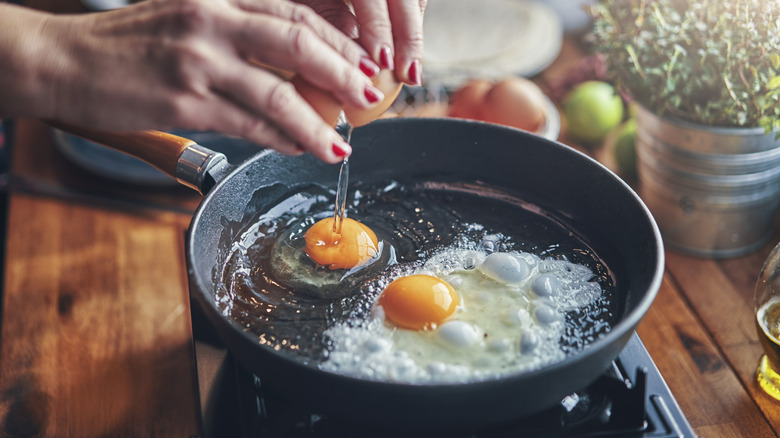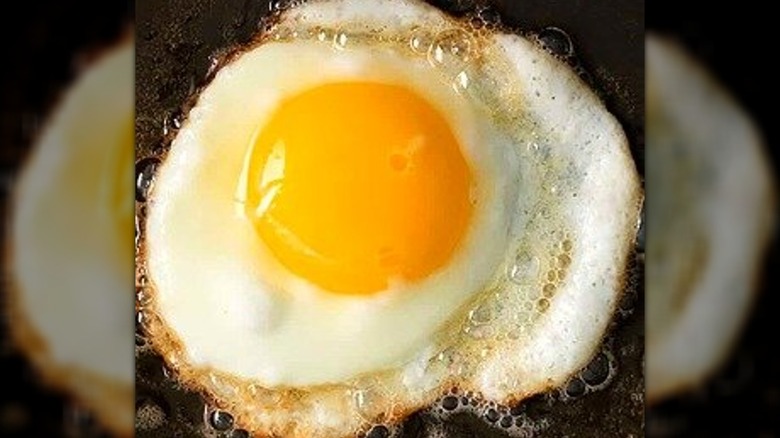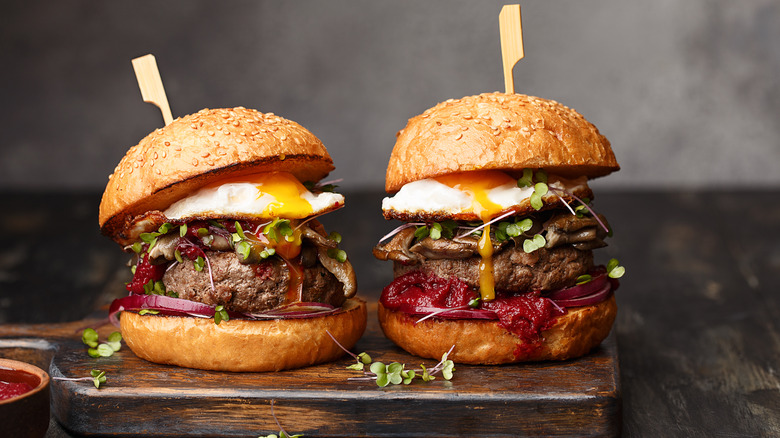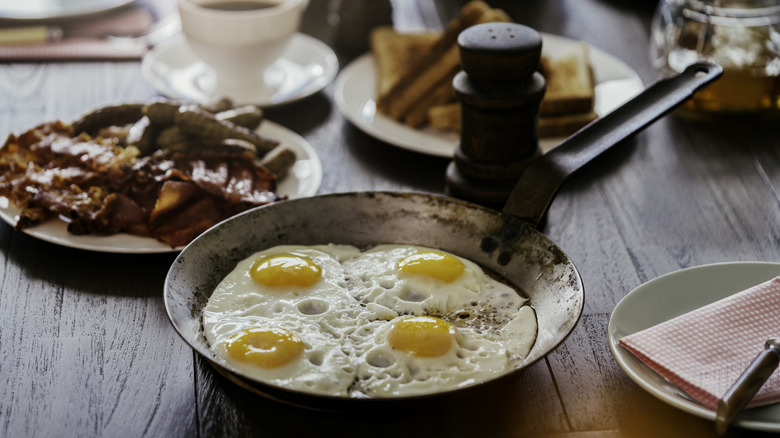The Type Of Oil You Should Usually Avoid When Frying Eggs
Eggs are one of the most basic edible natural treasures and they make an endlessly versatile ingredient in so many dishes from sweet to savory, breakfast to dinner to dessert. But an egg on its own is a triumph of nature's ability to produce tastiness and nutrition all in a single perfect package.
While you could dedicate your life to understanding the many ways to make use of eggs, from custards to meringues to souffles, a simple fried egg may be the most satisfying. And though it may seem simple enough to crack one of these babies into a hot, greased pan, perfecting your fried egg is actually an art form that requires consideration, particularly when it comes to which fat you choose for your preparation. What you don't want to select is one that will overpower the flawless, inherent tastiness of the egg, so it's best to avoid infused or flavored oils.
This is not a hard and fast rule, and you can certainly experiment with something like garlic or chili-tinged oil drizzled on top (or even cook directly in an oily sauce as in the case of pesto eggs), all depending on your dreams for the dish. But to really let your egg express its most authentic self, stay on the simple side.
Other fats for frying
From ghee to corn oil to bacon grease, you can choose from a number of options when selecting the ingredients to slick your pan. Typically, though, you want to avoid oils that have a low smoke point. High smoke point oils like avocado, peanut, or grapeseed are useful for getting your fried egg finished, but the most common go-to's are butter and olive oil.
There is often debate between these two, but the truth is that they are both great options for the job. As with most kitchen decisions, this comes down to what you want to prioritize for your finished dish. Olive oil will help your eggs get nice and crisp, especially when it comes to the white, and allows you to hone your egg's texture. Butter, on the other hand, brings big flavor. Particularly as it heats in the pan and becomes browned, the butter will become toasted, producing a nutty flavor from caramelized milk solids. There's a sweetness to brown butter that pairs beautifully with a savory and jammy fried egg.
Fried eggs your way
There's a reason that "put an egg on it" is a common culinary catchphrase; once your fried egg is exactly the way you want it, you can enjoy it in so many contexts. Sure, fried eggs are always classic on a breakfast plate beside a slice of toast and bacon or sausage with home fries, and they add a warm and luscious layer to avocado toast. But consider laying a fried egg over oatmeal, too. You can do this with your favorite maple brown sugar for a sweet and savory one-two punch, or lean into the latter with a parmesan oatmeal dish that is supremely delicious and a little bit surprising, too.
On that note, setting a fried egg over a bed of rice, grits, or orzo makes a hearty and sustaining meal in a bowl, while a fried egg taco is an ideal handheld iteration. Top a burger with a fried egg or even a dish of pasta or pizza and you have an instant, totally natural sauce without a single additional ingredient (and some of the greatest comfort food of all time). In all of these scenarios, you can try an infused oil if you feel like it'll complement your vision, but choosing a more neutral oil will always ensure you don't risk competing flavors for your eggcellent edible masterpiece.
Further fried egg pro tips
There are more considerations to keep in mind beyond your cooking fat for achieving fried egg excellence. Temperature is critical, as eggs are relatively small and cook fast. If the heat is too high, you'll have dry and overcooked whites before the yolk even has a chance to set. Medium heat helps you achieve an ideal cook without risking a crumbly, overcooked yolk or chewy, tough white. You want the pan to be pre-heated as well so that you get a bit of sizzle when the egg hits the pan.
Selecting an appropriate pan should also make life simpler. Non-stick pans will help release the egg more freely in combination with your cooking oil, and when the egg sticks, you're more likely to wind up with a broken yolk. Since that sad scenario may be considered the ultimate fried egg fail, flipping can feel intimidating, too. If you suffer from a fear of the flip, go for an over-easy preparation, and try covering the egg with a lid about halfway through. This allows the steam to do some of the work so your whites set up without any culinary acrobatics. To mitigate compromising your yolk from the start, make sure to crack your egg carefully. Resist the urge to use the side of your pan or bowl, and use the countertop or a flat cutting board to gently tap. Pair these tips along with a thoughtfully chosen oil, and you'll have the framework for many successful egg-speriments.



